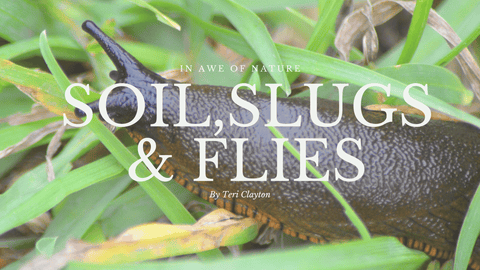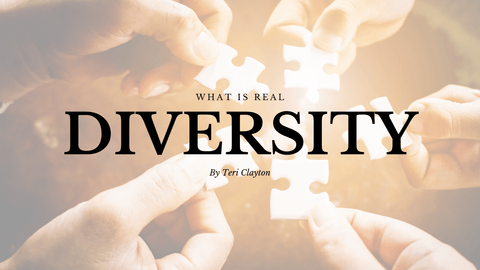Earth Day - Created to Protect Earth or Power?

Created for taking action to protect Earth….?
….or an excuse to expect others to change and demand that governments and corporations take greater responsibility for (and power over) our lives?
Earth day takes place annually on 22nd April each year. Earth Day marked the beginning of the modern environmental movement in 1970, but what is it all about exactly? What is it for and is it possible to engage in a truly positive way?
The following quote is taken from - https://www.earthday.org/history
‘Today, Earth Day is widely recognized as the largest secular observance in the world, marked by more than a billion people every year as a day of action to change human behavior and create global, national and local policy changes’.
No-one can deny that there is certainly an urgent need for everyone to learn and adjust the imbalanced lifestyle choices we each are making in our own individual lives. I have been immensely encouraged to discover that nearly everyone I have spoken with on the matter, is looking to try and make more balanced choices, when it comes to taking care of Earth and the diversity of life upon it. All too often however, those who claim to be willing to make changes, also choose to believe that their choices and actions are too small to be of any real benefit. This often leads to these same individuals demanding that the government get more involved, that policies be altered, or that additional laws urgently be created, in order to effect larger scale change. Whilst many people believe that this is the best route to create the level of change necessary, even well intentioned decision makers are facing multiple entangled webs of complicated wicked problems, that cannot be unpicked.
What most people are missing is that large scale change can ONLY be effected from the ground up, because this is where the real solutions come from. Demanding more top-down legislation and control simply stifles autonomy, restricts thinking and keeps everyone swimming around in circles. Top down solutions are strategic, complicated and restrictive, but bottom up solutions are iterative, simple and unlimited in their scope for the application of individual creativity.
Since it began, Earth Day has catalysed the following:
‘By the end of 1970, the first Earth Day led to the creation of the United States Environmental Protection Agency and the passage of other first of their kind environmental laws, including the National Environmental Education Act, the Occupational Safety and Health Act, and the Clean Air Act. Two years later Congress passed the Clean Water Act. A year after that, Congress passed the Endangered Species Act and soon after the Federal Insecticide, Fungicide, and Rodenticide Act’ (1)
Whilst many may be celebrating the creation of the above organisations and acts, in reality they keep everyone focused on stamping out the perceived problems, instead of connecting with a vision and actually creating a better way forward.
Our current approach to problems within society is to polarise, blame those we label as ‘other’ and demand they change, leaving behind a barren landscape with nothing growing in its place.
It’s the same approach people take when weeding the garden, attacking and destroying the weeds over and over again. This leaves the soil to die - rather than seeking to understand the cause of the imbalance and planting a diverse garden, in which weeds harmoniously find their rightful and balanced place. Weeds are required in a healthy garden, not least because they are the ones left standing through adversity and challenge.
The solutions to many of the problems we are all facing right now are so unbelievably simple, that children can understand AND implement them. These solutions however are not excessively profitable for anyone - nor do they excuse the absorption of greater power over others and they certainly do not involve quick fixes that allow everyone to take short cuts.
Whilst we prepare to lose many food producing farmers, and investors get their hands on large tracts of land and kickstart the carbon and biodiversity credit market, our precious food growing land is being lost. Far from protecting Earth, our current direction sees humanity further separated from the land beneath our feet. With a profitable future for corporations that supplies food raised, grown or cultivated in laboratories and vats. Meanwhile food growing land is being sent the wrong way down a profit generating funnel for growing genetically modified hydrocarbon fuels, solar panel farms, 'green' housing complexes and re-wilded eco-tourism.
If we are to stand a chance of a brighter future ahead, we must not lose the capacity to grow our own food on our own land, in harmony with nature. The more legal power that is handed over by the people and the more acts that are created, the more individuals will lose the capacity to build their own creative solutions from the soil up.
And the soil up is the only place you can build the foundations of real solutions from.
Below are a few of our own suggestions about how you might engage positively and powerfully in Earth Day and help create change for the better, of course you may come up with better ones:
- Find ways that you can help local food producers get through the challenging times ahead and support them to transition to methods that regenerate the soil.
- Speak to farmers, find out what their plans are and if they would stay in farming if they had more support.
- Read about the current revolution in farming and how it is affecting farmers, (such as withdrawing payment schemes without replacement ones being available and offering farmers exit payments to leave farming).
- Channel your energy into building the solutions, not attacking the problems.
- Begin to put together a plan to plant an edible perennial forage garden in your back garden, or in your local community - you won’t be short of support that is willing to embrace and drive these positive solutions right now. If you need money to do it, you will find plenty of it flying around!
- Find local people with large gardens that are willing to share them with others.
- Obtain permissions and then adopt gardens or waste grounds that people are struggling to manage.
- Local councils are all too willing to find ways to enhance local food production to reduce the burden on public services - get in touch with them and ask if they have any land you can plant on.
- Find local grants and monies that help local communities to secure greater resilience and gather together with others to build beautiful, resilient edible spaces.
- Learn more - buy a book (see list below), or enrol on a course (https://www.permaculture.org.uk/education/course-listings)
There is no denying that we need action, so this Earth Day make sure your actions go into creating and building the necessary SIMPLE solutions from the ground up. It’s the only way real positive change will happen.
If you would like further inspiration the following books are wonderful and would make a great purchase in support of Earth Day:
- The soil will save us; Kristin Ohlson
- Kiss the Ground; Josh Tickell
- For the Love of Soil: Nicole Masters
- Entangled Life; Merlin Sheldrake
- English Pastoral; James Rebanks
- Defending Beef; Nicollete Hanh Niman
- Toxic Legacy: How the weedkiller Glyphosate is destroying our health and the environment
- Missing Microbes: Martin Blaser
- The Forager's Garden - grow an edible sanctuary in your own back garden; Anna Locke
- Any book on edible perennial books
Happy Earth Day, I hope you manage to take some positive action to help create a more balanced life for all life, including individual human beings!
Ref
- https://www.earthday.org/history/






